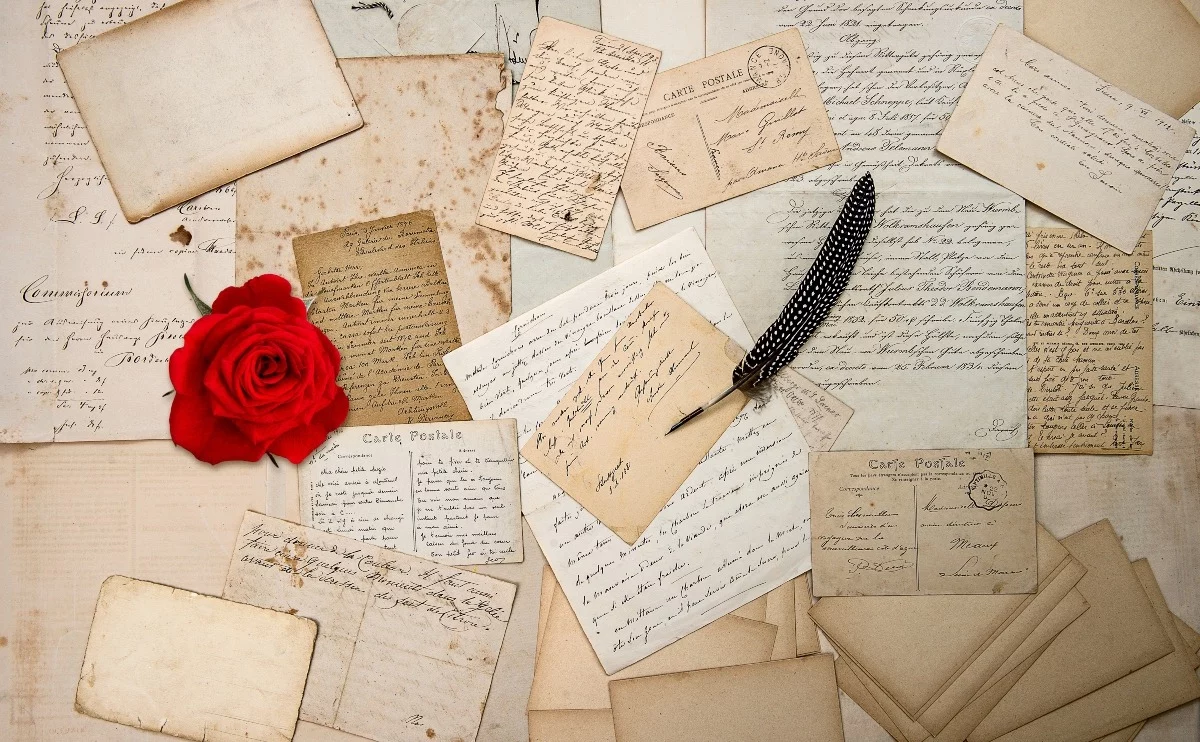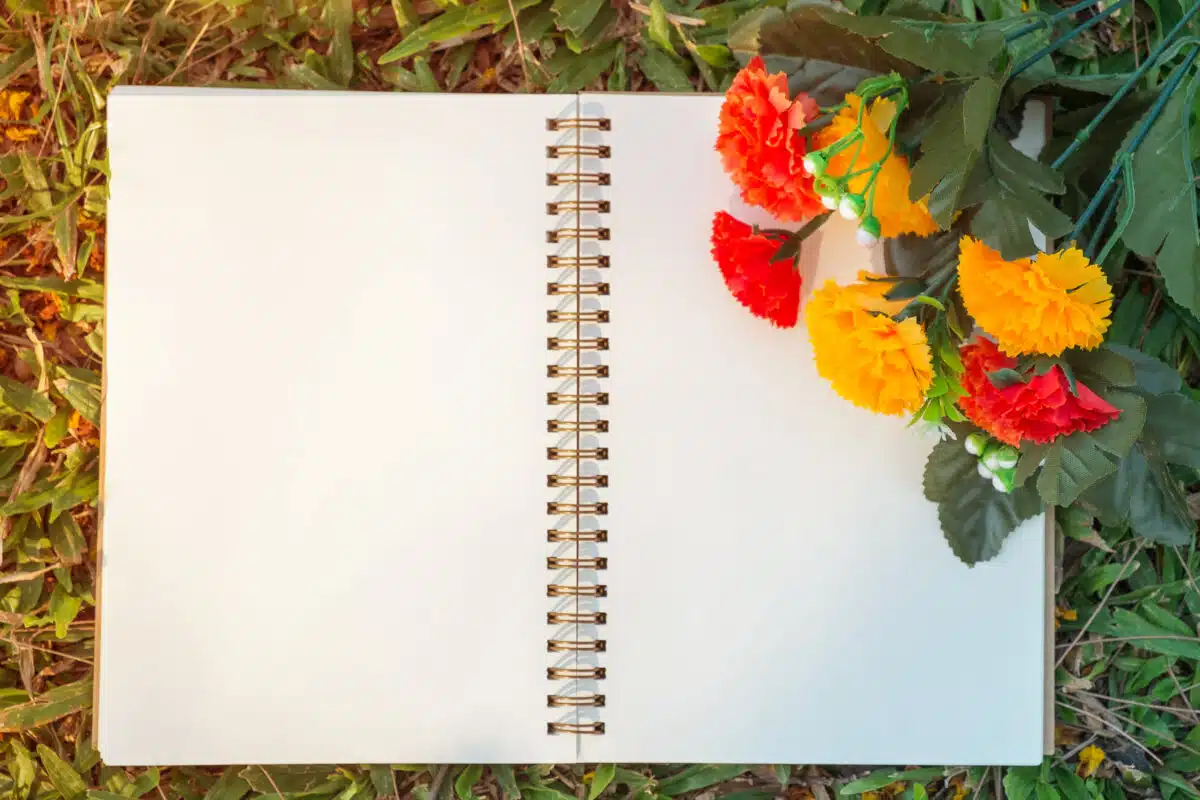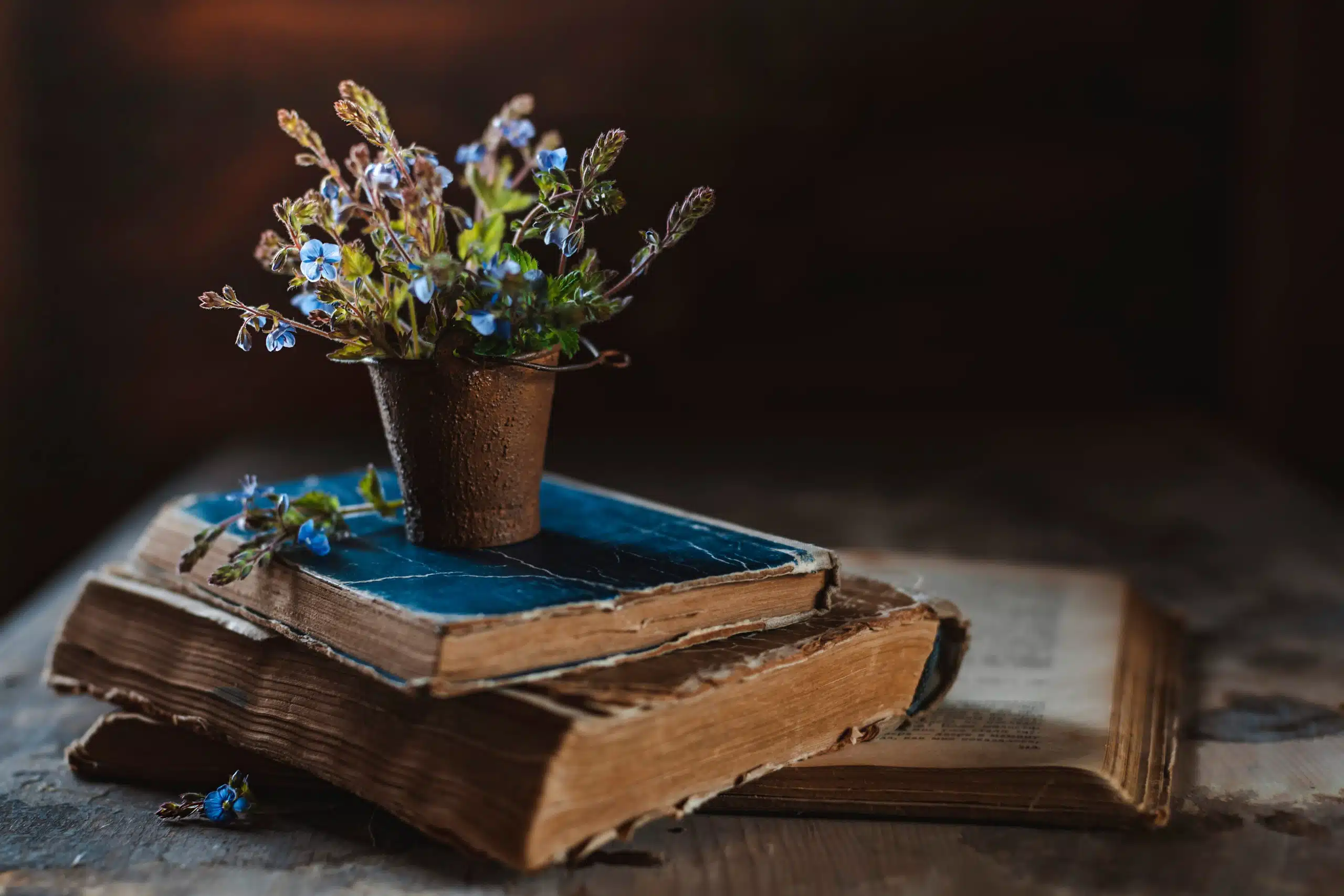Here’s what the Found poetry form is:
A found poem is a poem type created by borrowing texts from various sources.
Found poetry is in essence a “literary collage” where a writer takes existing texts from various sources like articles, speeches, letters, or even other poems, and then reorganizes them into a brand new poem.
So if you want to learn all about the Found poetry type, then you’ve come to the right place.
Keep reading!
- Diminishing Hexaverse Poetry Form
- Allegorical Poetry Form: Veil Truth in Verse
- Sijo Poetry Form: Quench Mind’s Thirst
- Palindrome Poetry Form: Express Your Core
- Tautogram Poetry Form: Harbor Harmony’s Hush
- Nonet Poetry Form: Carve Beauty in Lines
- Echo Verse Poetry Form: Amplify Your Emotions
- Contrapuntal Poetry Form: Echo Twin Realms

Forms of Poetry: Found Poetry

Found poetry is an umbrella term referring to poems that were constructed using elements “found” in other pieces of writing.
There are multiple variations of found poetry, but the general idea involves taking existing words or phrases from preexisting media and creating a new poem by recombining them.
The idea of found poetry has been especially popular in recent decades, as poets and other artists look for new and interesting ways to rebel against the concept of ownership or to repurpose the many walls of text in the modern world into something new.
Stick around until the end, when we will discuss the all-important issue of copyright law.
In short, this is generally a genre you should only partake in as a hobby. Trying to commercialize found poetry can be a risky business.
Basic Properties of Found Poetry

| Rhyme Structure | None |
| Meter | None |
| Origin | 1920 |
| Popularity | Has been especially popular in recent decades |
| Theme | Varies |
Variations of Found Poetry

Found poetry comes in many shapes and forms.
While some are more prevalent than others, the general ideology of borrowing “found” words stays the same.
#1 Blackout/Erasure Poetry

This is perhaps the most popular version of found poetry in the modern era.
Blackout poetry is made by literally “blacking out” the words on a page from a magazine, newspaper, article, etc.
This is typically done with a black marker or similar implement.
Blackout poetry is interesting in that the words are “found” by removing the excess words on the page, leaving only the new poem behind.
As an example:
This is a regular paragraph that will be used to demonstrate the art of blackout poetry. Keep in mind that a real blackout poem will be written by carefully choosing the words presented from a news article, speech, magazine clipping, etc. In the second paragraph, a proper example will be demonstrated for you.
This is a regular paragraph that will be used to demonstrate the art of blackout poetry. Keep in mind that a real blackout poem will be written by carefully choosing the words presented from a news article, speech, magazine clipping, etc. In the second paragraph, a proper example will be demonstrated for you.
While the above example is certainly nothing incredible, it should get the point across.
The original entire paragraph was condensed down to simply, “This is the art of blackout poetry.
A blackout poem will be presented in the second paragraph for you.”
Of course, you would expect an authentic blackout poem to twist the meaning into something new, but this was just a quick example to show the main technique.
Erasure poetry is essentially blackout poetry with a new coat of paint, literally.
Instead of covering the words that will not be in the poem with a black marker, they are instead erased or whited out.
The end result is similar to a blackout poem but is easier to read as the words are more likely to stand out on the page.
#2 Cento

A cento is a poem written entirely by taking passages from other works and recombining them.
The concept of the cento goes all the way back to the 3rd-4th century AD, with Hosidius Geta’s Medea, a piece composed using lines originally by Virgil.
It’s entirely possible that the cento was alive and well even before this, however.
This is simply the oldest cento we have on record.
Ausonius was the earliest poet known to have written down a proposed structure for the cento.
His ideal cento is one that can be taken from the same poet or several, in which each piece taken is at least half a line and no longer than a line and a half.
Centos composed using the lines of Homer and Virgil have been especially popular historically but have since evolved into the more modern concept of the “patchwork poem.”
The terms cento and patchwork poem are often used interchangeably since there are only very minor differences that are mostly inconsequential.
#3 Patchwork Poem

The patchwork poem, a modern descendant of the cento, is commonly understood to be composed using full lines.
So instead of Ausonius’ half-line to the line-and-a-half range, the poet is expected to take one line from each source.
Patchwork poems that take each line from a different source tend to be more impressive than poems that only mix and match lines from two or three sources, but it’s hard to quantify any definitive “rules” when it comes to found poetry, so feel free to experiment.
As an example, here is a short poem combining lines from four different works.
Some say the world will end in fire,
in a kingdom by the sea.
Rage, rage, against the dying of the light.
Their very memory is fair and bright.

This poem takes its first line from Robert Frost’s “Fire and Ice”, the second line from Edgar Allan Poe’s Annabel Lee, the third line from “Do not go gentle into that good night” by Dylan Thomas, the from “They are all Gone into the World of Light” by Henry Vaughan.
One interesting note about patchwork poems is that they can take on new meanings if the reader is familiar with the phrases, having seen them in their original context.
The above lines, for example, all come from famous poems that reference death and/or grieving.
#4 Dada Poetry

Dada poetry is an absurd form of poetry in which words are simply chosen at random by some method and put in the order they appear.
This may sound completely meaningless but, when the form came to be, that was the point.
Dadaists were a group of artists who were outraged at the horrors of World War I and all of the abstract “-isms” that they felt contributed to the inhumanity of the times, such as nationalism.
While the practitioners did not see what they were doing as art, that was exactly the point.
By producing “non-art” the Dadaists were essentially trying to get the attention of the elitists who they felt were contributing to the world’s problems and take the wind out of their sails by touting absurdism, negation, and spontaneity.
The message was meant to be a stubborn declaration of independence and individuality, as the artists behind the movement were vehemently opposed to the rampant patriotism of the era.
Of all the many, many forms of poetry, Dada poetry is probably the easiest to produce.
Simply boot up a random word generator, click on it however many times you’d like to, and type the words into a word processor.
Of course, the whole point of the Dada movement was that it was not supposed to be seen as art, so your mileage with trying to get it published anywhere may vary.
But hey, perhaps the magic of RNG will produce a work worthy of Shakespeare.
Anything is possible.
#5 Cut-Up Poetry

Cut-up poetry is similar to Dada poetry but with a slight twist.
You first take clippings from a newspaper or magazine and cut them up into random sections of words, preferably very short sections that can function as lines of a poem.
You then arrange these cut-up pieces into the order that you feel works best, discarding segments that don’t work for the poem.
The goal is not necessarily to get something that’s perfectly cohesive or grammatically correct but to produce something that has consistency to it, often by choosing lines that share similar connotations.
The difference, naturally, comes exclusively from the act of arranging the lines purposefully and throwing out segments that won’t work in the poem.
This makes cut-up poetry an odd middle ground between Dada poetry and more traditional poetry.
William S. Burroughs brought attention to the technique in the 1950s and ’60s, taking inspiration from the découpé technique he found during a trip to Paris. (Literally “cutting.)
Is Found Poetry Plagiarism?

The simple answer is: It depends on who you’re asking.
Even if you were to cite your sources carefully, there is no full guarantee that a found poem would not be considered plagiarism if you did not first get permission from the original writers to use their words.
It can be a gray area both legally and ethically.
Adding to that, found poetry is generally not seen as a serious or respectable branch of poetry, except in specifically the circles that indulge in it.
So while you might get lucky and write a famous piece of found poetry, it could also come with a hefty fine and a big hit to your credibility if the original writer and his/her audience feel that you’re profiting mainly off from stolen work.

Writing found poetry as a non-profit hobby or practicing found poetry in a classroom is naturally fine.
However, you should be aware of the nuances of copyright law in your local region if you’re going to try incorporating found poetry into a professional portfolio.
If you are going to write a found poem and try to pursue it as a commercial endeavor, then make absolutely certain that you reference every source properly so that readers (and lawyers) understand that you are not claiming someone else’s work as your own.
Most writers will be perfectly satisfied with a little credit, but you enter this field at your own risk.
Poet’s Note

Fun Fact of the day: This is actually my least favorite genre, but not for the reasons you might think.
I think borrowing the words of others to create something new is innovative and interesting.
My problem with the genre is that writing them usually involves having several tabs open on my computer. Gross.
Comprehensive Collection of Poetry Forms: Craft Words Into Art

Dare to traverse the entire spectrum of poetic forms, from the commonplace to the extraordinary?
Venture from the quintessential Sonnet to the elusive Mistress Bradstreet stanza, right through to the daunting complexity of Cro Cumaisc Etir Casbairdni Ocus Lethrannaigecht.
For those with a zeal to encounter the full breadth of poetry’s forms, this invitation is yours.
Start exploring the vast universe of poetic ingenuity with our comprehensive array of poetry forms right now!
- Diminishing Hexaverse Poetry Form
- Allegorical Poetry Form: Veil Truth in Verse
- Sijo Poetry Form: Quench Mind’s Thirst
- Palindrome Poetry Form: Express Your Core
- Tautogram Poetry Form: Harbor Harmony’s Hush
- Nonet Poetry Form: Carve Beauty in Lines
- Echo Verse Poetry Form: Amplify Your Emotions
- Contrapuntal Poetry Form: Echo Twin Realms
